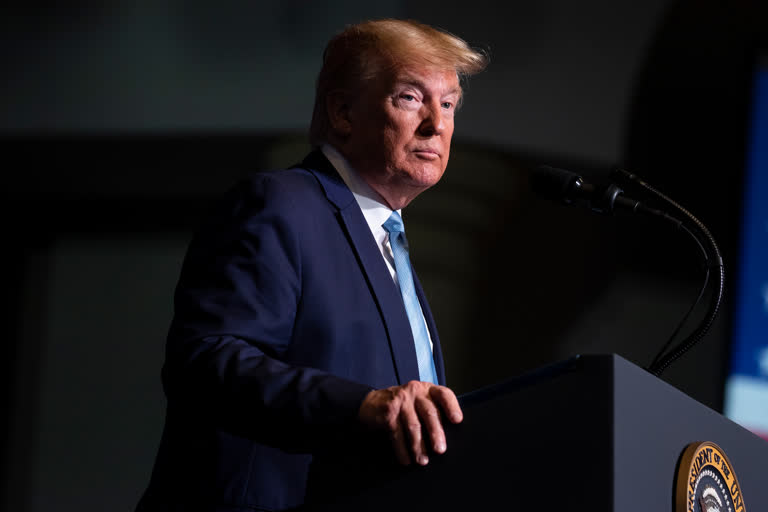Washington:US officials on Monday braced for Iran to respond to the killing of its most powerful general, noting heightened military readiness in the country and preparing for a possible “tit-for-tat” attempt on the life of an American military commander.
President Donald Trump ordered the Jan. 2 strike against Gen. Qassem Soleimani, the head of Iran's elite Quds Force, after the death of an American contractor in Iraq. Now, as the massive demonstrations of Iran's public mourning period for Soleimani come to a close, officials believe the next steps by America's longtime foe will determine the ultimate course of the latest crisis.
While officials say American intelligence isn’t clear on whether Iran's latest military moves are designed to bolster Tehran’s defenses or prepare for an offensive strike, the US is continuing to reinforce its own positions in the region, including repositioning some forces. One official said the US anticipated a “major” attack of some type within the next day or two.
On Monday, Defense Secretary Mark Esper said no decision had been made about withdrawing troops from Iraq. Pro-Iranian factions in the Iraqi Parliament have pushed to oust American troops following Soleimani's killing on Iraqi soil. Esper spoke to reporters after a letter from a US Marine general circulated that seemed to suggest a withdrawal had been ordered in response to a vote by the Iraqi Parliament over the weekend. “There's been no decision whatsoever to leave Iraq," Esper said.
Read more:Weeping, Iranian supreme leader prays over general slain by US
Soleimani's death, which has sparked major protests, further nuclear development and new threats of violence, has raised the prospect of a wide and unpredictable conflict in the Middle East and escalated tensions between Iran and the US.
The two nations have careened from one flare-up to another since Trump began his “maximum pressure” campaign against Iran shortly after taking office. He abrogated the 2015 nuclear deal and reimposed crushing economic sanctions, both steps aimed at preventing Iran from getting a nuclear weapon and deterring the sort of regional aggression spearheaded by Soleimani.
Two US officials, speaking on condition of anonymity to discuss internal discussions, said targeting Soleimani was not representative of a wholesale shift in American policy toward Iran, despite Secretary of State Mike Pompeo's comments on Sunday that the US was targeting Iran's “actual decision-makers” rather than its network of proxy allies. Trump has repeatedly contended that he is not seeking “regime change” in Iran, as has been pushed by some of his more hawkish advisers.
Still, Trump's strike against Soleimani, a revered figure in Iran whose death sparked large displays of anger and grief, was a risky decision his Republican and Democratic predecessors opted not to take out of concern it would draw the US and Iran closer to conflict.
US officials are also aware that Iran could try to strike a high-level American leader in a “tit-for-tat” move, potentially a military commander.
One official said some Iranian ships have spread out, and while the intent isn’t immediately clear, they could move rapidly to attack.
The US military has increased the protection of its forces, particularly in Iraq. Officials said a number of the recently deployed soldiers from the 1st Brigade of the 82nd Airborne Division had moved into Iraq from Kuwait in order to increase security for Americans there. The US military has stopped all training of Iraqi forces to focus on force protection, officials said.
